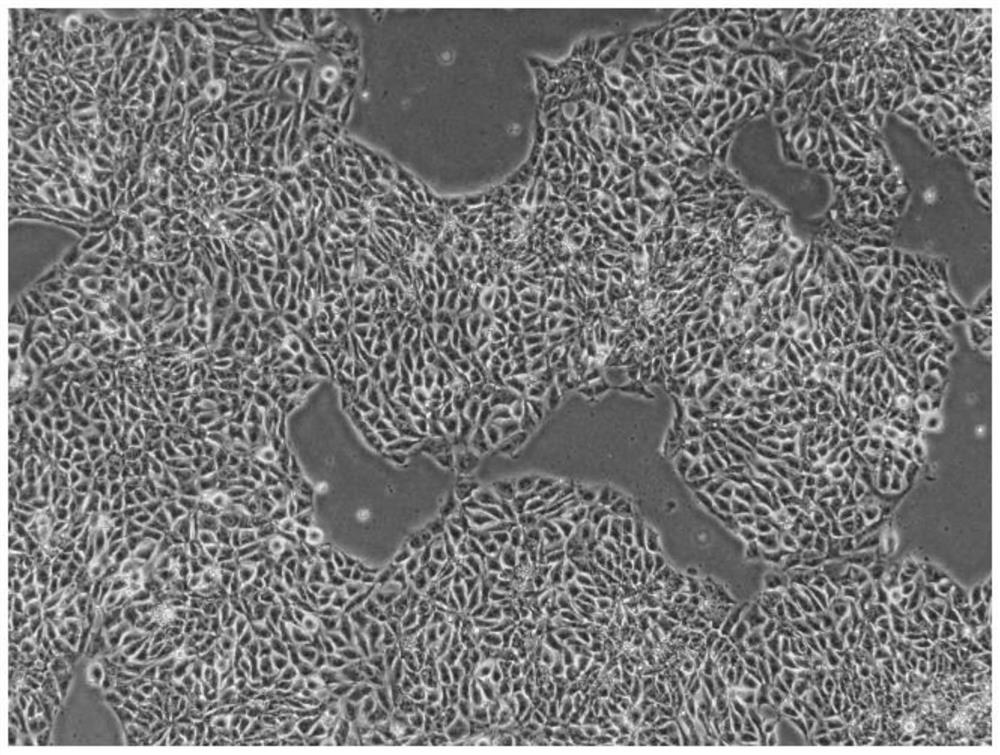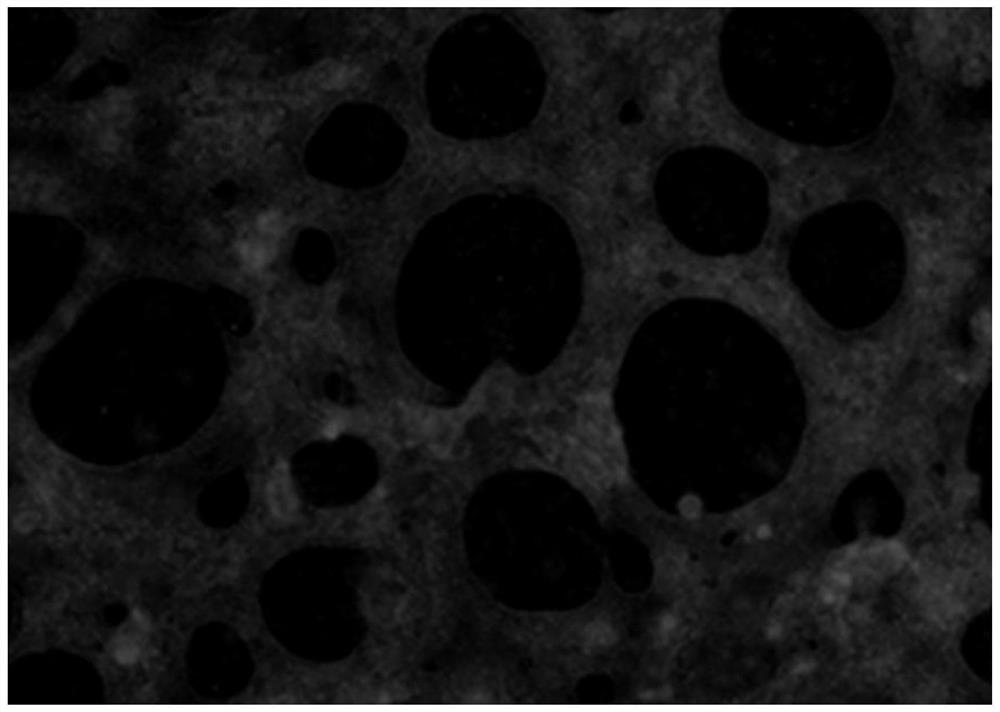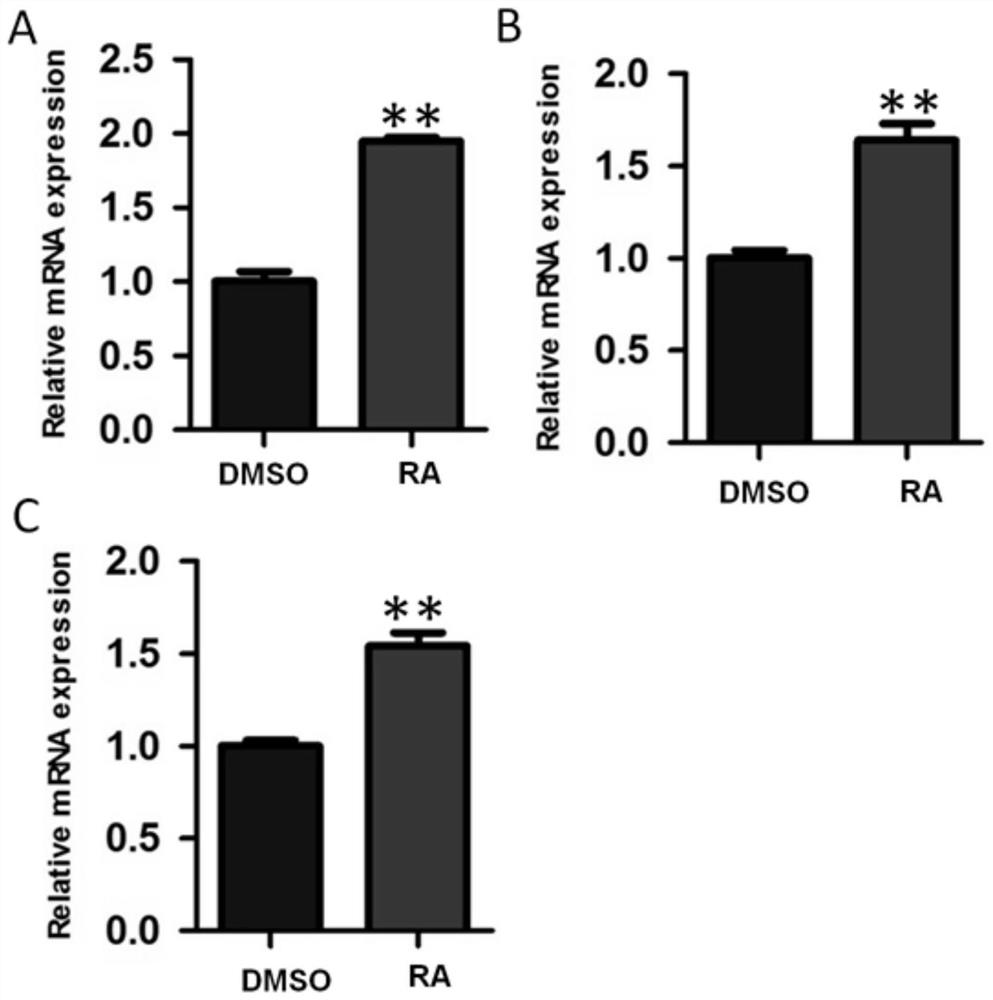A method for inducing directional differentiation of pluripotent stem cells into cardiomyocytes
A technology of pluripotent stem cells and cardiomyocytes, applied in the field of induction of directional differentiation of pluripotent stem cells into cardiomyocytes, can solve the problems of complicated differentiation methods, low safety, and arrhythmia, so as to reduce the area of myocardial infarction and improve the differentiation efficiency , low arrhythmia effect
- Summary
- Abstract
- Description
- Claims
- Application Information
AI Technical Summary
Problems solved by technology
Method used
Image
Examples
Embodiment 1
[0036] Cultivation and subculture of embryonic stem cells of embodiment 1
[0037] In this example, the HES3 cell line in hPSCs was used as the experimental object. The HES3 cells were grown on Matrigel-coated culture dishes and diluted with 1:200 DMEM / F12 basal medium for use. Then the HES3 cells were planted on matrigel, and the mTeSR1 or E8 medium was used for cell culture, and the medium was changed every day. When the HES3 cell density reaches about 80% and the cell clone is large enough, the cells are subcultured.
[0038] When subcultured, wash twice with DPBS to remove dead cell debris on the surface, add 0.1mol / L EDTA and place at 37°C, 5% CO 2Digest for 7 minutes in a constant temperature incubator. After the digestion time is up, observe the gaps between the adherent cells under the inverted microscope but have not yet separated from each other. The cell colonies are observed to be opaque and whitish with the naked eye. Suck off the digestion solution, add the ste...
Embodiment 2
[0040] Example 2 Directed induction of embryonic stem cells to differentiate into cardiomyocytes
[0041] The HES3 cells that had been cultured and subcultured to passage 4-5 were washed with DPBS, digested with 0.1 mol / L EDTA for 7 minutes, and washed with 10 4 / cm 2 Inoculate the culture dish at a density of 37°C, 5% CO 2 Cultivate in the incubator for 4 days, and the cell density reaches more than 85%, and replace with RPMI1640+B27-insulin induction medium.
[0042] Retinoic acid treatment group (RA group): RPMI1640+B27-insulin containing 5 μM CHIR99021 was used to induce differentiation on the 0th to 1st day, and RPMI1640+B27-insulin containing 1 μM retinoic acid was used to induce differentiation on the 2nd to 3rd day , cultured with RPMI1640+B27-insulin containing 5 μM Wnt inhibitor on the 4th to 5th day. On the 6th day, only RPMI1640+B27-insulin was used for culture. After the 7th day, the cells were cultured with RPMI1640+B27 every day, and obvious myocardial beati...
Embodiment 3
[0052] Example 3 Culture, passage and directional induction of induced pluripotent stem cells
[0053] In this example, the HES3 cells in Examples 1 and 2 are replaced by the SCCTM-iPSC-1 cell line in hPSCs as the experimental object. For other specific implementation methods, refer to Examples 1 and 2. According to the statistical experiment results of flow cytometry, it is shown that SCCTM - The positive expression of cTnT in the cardiomyocyte control group (DMSO group) induced by iPSC-1 cells was 36.93% ( Figure 4 C), the cTnT positive expression of RA group is 59.85% ( Figure 4 D).
PUM
 Login to View More
Login to View More Abstract
Description
Claims
Application Information
 Login to View More
Login to View More - R&D
- Intellectual Property
- Life Sciences
- Materials
- Tech Scout
- Unparalleled Data Quality
- Higher Quality Content
- 60% Fewer Hallucinations
Browse by: Latest US Patents, China's latest patents, Technical Efficacy Thesaurus, Application Domain, Technology Topic, Popular Technical Reports.
© 2025 PatSnap. All rights reserved.Legal|Privacy policy|Modern Slavery Act Transparency Statement|Sitemap|About US| Contact US: help@patsnap.com



